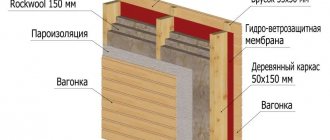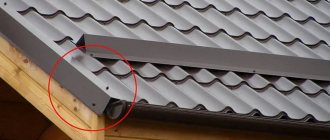Home improvement is a serious task, especially if the building cannot be connected to citywide utility networks. In this case, local systems are built, including a local sewerage system. But before construction begins, you will need to develop a project and carry out calculations. Let's figure out how to calculate the volume of a septic tank.
Local sewage systems are equipped with a treatment plant. Most often, such an installation is a septic tank with soil treatment. For the system to function normally, it is important that the tanks are large enough, otherwise the water will not be properly purified. Let's figure out how to calculate the volume of a septic tank.
How does it work?
To understand what volume a septic tank tank should have, it is worth getting acquainted with how this installation functions. Cleaning proceeds like this:
- the water entering through the pipeline enters the first settling tank, where primary settling occurs, during which the heaviest and largest particles settle;
- then the water, freed from the largest debris, flows through the overflow pipe into the second settling tank, where the settling process is repeated, only now lighter and smaller particles of debris are precipitated from the water;
- well-settled water is supplied for soil purification - into a filter well or to filtration sites.
As can be seen from the description, the main method of cleaning in conventional septic tanks is settling. And in order for the suspension to settle well, it must be at rest for a long time. In other words, the contaminated liquid must remain in the tanks of the treatment plant for a long time, only in this case it will have time to settle well.
It has been experimentally determined that to achieve an acceptable level of purification, the liquid must remain inside the settling tanks for at least 72 hours. Therefore, the tanks must accommodate the amount of waste generated at the serviced facility during this time.
Let's consider the design of the device
The construction of external sewerage has the sole purpose of getting rid of human waste products. But before doing this, it is necessary to ensure the safety of the wastewater so as not to pollute the water that has yet to be used.
Traditionally, cesspools were used for this purpose to accumulate waste. Depending on the intensity of use, such devices require regular pumping of the contents; according to SanPin standards, such an event should be performed at least once every six months or when full.
Watch the video - operating principle, diagrams and experience of using sewerage without pumping
SEPTIC - PRINCIPLE OF OPERATION, DIAGRAM, EXPERIENCE OF USE. Sewerage without pumping. High groundwater
Watch this video on YouTube
In some cases, the regularity of such an operation occurs within a month or two, and its cost ranges from 12,000 rubles.
The main components of a storage tank with pumping are:
- A durable sealed housing capable of holding contents without penetrating into the ground outside the cesspool. To do this, you need to thoroughly waterproof it.
- Natural tank ventilation system. When storing fecal waste, methane gas is formed, which in a certain proportion with air is a flammable or explosive mixture that must be regularly released from the chamber.
- Double cap on the neck. Internal wooden and external metal or plastic.
- A drain pipe through which wastewater flows from the internal sewer system to the external one.
The principle of constructing a septic tank without pumping is somewhat more complicated, since the processes occurring in wastewater during its processing are important.
Therefore, the main components of such devices are:
- Drain pipe between the exit from the building and the storage tank of the external sewerage system. Its diameter should be 100-110 millimeters, length at least 10 meters. For financial and technological reasons, plastic products are usually used.
- Next comes the storage tank, which performs several functions. The first is crushing the drain stream, for which a baffle plate is used, which directs the stream down and crushes it. In this case, heavy inclusions settle to the bottom, where they are processed by aerobic bacteria.
- When the liquid level rises to the overflow pipe, it begins to flow into the second container. An air atomizer and a low-power compressor for pumping atomized air are installed in it.
The sufficiency of oxygen in wastewater triggers the work of aerobic bacteria, which additionally process organic matter in the liquid being purified, bringing its degree of purification to 98-99%.
Further, various devices can be used in the form of chlorine cartridges, UV emitters, additional filters for final cleaning and disinfection of the drain.
What factors need to be taken into account?
As it becomes clear from the above, the volume of the tanks directly depends on how much water the residents use. Consumption is affected by:
- the number of users, that is, how many people live permanently and also come periodically. Naturally, in a facility for a family of 3-4 people, the amount of sewage will be significantly lower than in a residential building of a holiday home designed for 20 guests and 15 staff;
- equipping the house with plumbing. It is clear that in a house equipped with a 350-liter jacuzzi, the volume of wastewater will be greater than in a house that only has a shower, even if the same number of people live in these houses.
Regulations and regulatory requirements for septic tank volume
The installation of a septic tank, removal and disposal of wastewater is subject to regulation by documentation adopted by the government of the Russian Federation. If current norms and standards are violated, this poses a risk of environmental contamination, as well as holding the owner of the septic tank liable. When calculating the volume of a storage tank, we are guided by the following norms and rules:
- SP 2.04.03-85 “Sewerage. External networks and structures” - establishes sanitary protection zones near treatment facilities, as well as the required volume of septic tank capacity.
- SP 2.04.01-85 “Internal water supply and sewerage” or their modern version SP30.13330.2012 - for calculating wastewater flow rates.
- Documents on the design of engineering systems MDS 40-2.200, which contain regulatory calculations for the calculation of treatment systems and additional structures (drainage wells, filtration fields, etc.).
It is very important to remember:
- According to SanPiN standards, the entire residence time of wastewater in a treatment facility from the moment it enters it until it exits should be from 3 to 14 days. The design of modern septic tanks allows the resulting water to be used after post-treatment. The entire period of liquid processing in the chambers must take into account the accumulation of incoming waste.
- The part of the solid deposits in the first chamber will be about 20 percent of the total volume of the tank. Also, when installing a septic tank, it is necessary to deepen it relative to the exit of the sewer pipe from the house so that the waste drains better into the cleaning chamber.
- When using a septic tank with a smaller volume than required, there is a risk of clogging the cleaning filters, making the filtration process ineffective and putting the entire sewage system out of operation.
- The parameters of the septic tank chamber must correspond to the volume of the sewer truck, because it will be impossible to pump out liquid from a tank that is too deep (more than 3 meters). The tank capacity of the machine is 3.75 m³.
- When installing a septic tank, all pipes installed in it must be equipped with fittings at the ends. When the fittings are installed correctly, effective filtration is achieved, as well as protecting the chambers from excessive filling.
Formula
The easiest way is to calculate the volume of a septic tank using a simple formula:
V = 3 * n * Q * 1.2
In this formula, the symbols indicate:
- V – volume of settling tanks;
- n – number of people;
- Q is the daily volume of wastewater.
The numbers indicate:
- 3 – the duration of the cleaning cycle lasts three days;
- 1.2 is the correction factor necessary to increase the volume of tanks in case of a temporary increase in the volume of wastewater, for example, in the event of the arrival of guests.
Advice! If the family is distinguished by hospitality and they have several people visiting, it is worth increasing the volume of the septic tank using a correction factor of 1.5.
How to determine the volume of waste?
If determining the main variables included in the formula does not cause difficulties, then problems often arise with the answer to the question of how to determine the daily volume of wastewater. This indicator depends on the number and type of plumbing fixtures.
The standard daily consumption value is 15 or 20 deciliters. If the facility does not have a bathtub, but only a shower stall, then the average daily consumption can be taken as 15 deciliters. If you have a bath, this figure should be increased to 20 deciliters.
Advice! If the house is equipped with a standard set of plumbing, but all family members are accustomed to taking a bath every day, then the daily volume of wastewater per person will be 30 deciliters.
Why choose septic tanks from Septic Topas Plus
In Moscow and the Moscow region, many companies offer services for the sale and installation of septic tanks, but you need to trust this difficult issue to the best. It’s easy to imagine the consequences of installing a low-quality device. The Septic Topas Plus company catalog contains only proven septic tanks from domestic manufacturers: Topas, Unilos Astra, Eurolos, Termit, Tver, Diamant, Dochista, Terra, Biozon and Kolovesi. The company's managers will visit the site free of charge, and after making preliminary calculations, they will help you choose the most suitable recycler. As proof of the quality of our services, we offer a three-year guarantee, affordable prices and discounts for regular customers.
Examples of calculations
Let's give a couple of examples of how you can calculate the optimal size of settling tanks
Example one
Conditions: A local sewage system is being built at home for a family of five members. The house is equipped with a standard set of plumbing fixtures, the daily volume of wastewater per person is standard - 20 deciliters. We carry out the calculation using the above formula: V = 3 * 5 * 20 * 1.2 = 360 deciliters or 3.6 m³.
Example two
Conditions: you need to determine the optimal volume of a septic tank for a dacha where 3 people will relax in the summer, and 1-2 people will often come to visit. The dacha is equipped with a shower, so the daily volume of wastewater will be 15 deciliters: V = 3 * 3 * 15 * 1.5 = 202.5 deciliters or 2.02 m³.
Example three
It is necessary to calculate the volume of a treatment plant for a motel with a capacity of 20 guests. Since motels do not have bathtubs, the daily consumption can be taken as 15 deciliters. And since, in addition to guests, the motel has service personnel, it is worth using the maximum increasing factor: V = 3 * 20 * 15 * 1.5 = 1350 deciliters or 13.5 m³.
Estimate for a “people’s” septic tank made of concrete rings
Expenses:
- Concrete rings, including delivery, - 33,500 rubles;
- Tunnels - 30,000 rubles;
- Excavator rental - 8,500 rubles;
- Manipulator - 8000 rub.;
- Soil removal - 11,000 rubles;
- Sand - 17,500 rubles;
- Crushed granite, fraction 5-20, 10 cubic meters – 18,500 rubles;
- Salary for hired workers – 18,500 rubles;
- Consumables - 6,700 rubles;
- Well, hatches, tees, bends - 6400 rubles;
- Extruded polystyrene foam and geotextiles - 5,700 rubles;
- Sealant - 2800 rub.;
- Additional rings and DSP - 900 rub.
Total: 168 thousand rubles.
How many cameras should there be?
The number of chambers, as well as the total volume of the treatment plant, directly depends on the volume of wastewater to be disposed of. For private residential properties (houses, dachas), as a rule, two sealed settling tanks are built.
In addition, a third element is included in the system; this can be a filter well or filtration platforms. If a large septic tank is being built to serve 15 or 20 users, then the number of settling tanks should be increased.
When building a two- or three-chamber installation, the dimensions of the chambers are made unequal. So, the largest should be the receiving compartment. In the two-chamber version, it should occupy 75% of the total volume, since it is in this compartment of the septic tank that the heaviest and largest inclusions settle. If a three-chamber version of a septic tank is being built, then the receiver should account for 50% of the total capacity, and the remaining two chambers should be made identical.
Advice! Not in all cases, chambers are made different in volume. For example, when building a treatment plant from reinforced concrete well rings or Eurocubes, all compartments of the installation will be the same.
Types of sewer rings and their scope of application
To drain sewer water, pipes are usually used that are made of polymer materials, cast iron, ceramics, asbestos cement, reinforced concrete; these products generally have a small diameter, with the exception of structures made of lightweight plastic components. If a large pipeline diameter is required for laying underground communications, the weight of long pipes becomes too large for transportation and installation of the line, so it is constructed from short rings.
Due to their low cost, wide sewer rings are made only from concrete, and this material currently has no competitors. With the development of modern technologies and the tendency to use polymers in all areas, analogs of concrete products have relatively recently appeared on the market - polymer-sand rings, which are used only for the construction of vertically installed structures.
If in the urban planning field, underground horizontal communications are laid from reinforced concrete rings for transporting organic waste, storm and gray wastewater, they are used as protection for water supply and gas pipelines, then in the household sector their use is of a different nature. In individual areas, reinforced concrete sewer rings serve as the main elements in the construction of the following structures:
Water intake wells. Installation of wells for collecting drinking water from reinforced concrete rings is one of the most popular methods of supplying water to individual residential buildings in urban and rural areas. The mine is dug manually or mechanized, after which sewer wall rings with a lock are immersed in it. If a well is made of concrete rings on the site, the depth of the structure can reach 30 m - in this case, a submersible electric pump is used to draw water.
Septic tanks. Some homeowners use sewer rings to build septic tanks or sedimentation tanks with their own hands, using structures with a closed bottom and top.
Drainage wells. Installation of reinforced concrete rings for sewerage in households is one of the most common areas of their application. Sewage water treated in individual septic tanks is disposed of on its own site, using aeration fields or drainage wells for additional purification and direction of wastewater underground. Many people install the drainage chamber with their own hands from reinforced concrete rings, installing several elements with a locking connection on top of each other in a vertical position.
Rice. 2 Engineering structures made of reinforced concrete rings
Inspection wells. Engineering structures of this type are needed for sewerage in a private house in cases where the underground pipeline has a large length or branches. To carry out cleaning, preventive work and inspection, small diameter wells are placed along the sewer pipeline. They are designed to provide access to inspection hatches installed in pipes for cleaning them in case of blockages and monitoring the condition of the line.
Caisson wells. A well made of reinforced concrete rings is often used to place pumping equipment in it, to protect a well source of water from freezing and precipitation when it is collected by a submersible electric pump or a surface pumping station. The depth of such structures usually does not exceed 2 m; during installation, they often use rings with a finished bottom or upper ceiling with a hole for a hatch; another installation option is the installation of separate round slabs for the bottom and upper manhole. Also, for caisson wells, experienced users purchase ready-made structures with built-in metal running brackets located along the entire height of the wall.
Septic tanks. Often in private households, especially in rural areas, residents who are deprived of access to a centralized sewerage system share waste disposal. They install a separate toilet for feces on the street, and gray water after washing dishes, laundry, cleaning rooms and other household needs is poured through sewer pipes into a drainage sump constructed from concrete rings.
Cellars. Concrete rings with a bottom can be used on a private plot for the construction of cellars intended for storing fruit and vegetable products deep underground in winter and summer.
Horizontal passages. When laying utilities under roads, to transfer water masses to the other side of highways and railways, large-diameter reinforced concrete rings are often used, which are simpler and easier to lay sequentially one after another than to immediately stretch a heavy long pipe.
Rice. 3 Excavation of soil for wells using special equipment
What can errors in calculations lead to?
If the volume of the settling tanks is determined incorrectly, the installation will perform worse. So, if the capacity of the installation is insufficient, the liquid will not have time to settle properly and poorly purified water will be supplied to the outlet.
This will lead to the fact that the soil filter used for post-treatment will quickly become silted and will become worse at filtering water. Restoring the system will require labor-intensive repairs.
It is not practical to build sedimentation tanks with a large reserve volume for economic reasons, since the construction of a large-capacity septic tank will cost much more than the construction of a compact model.
So, in the process of designing a local sewerage system, a septic tank is calculated. It is very important to do this work correctly, since the quality of the treatment plant will depend on it. If you plan to buy a ready-made septic tank, then there is no need to carry out calculations; the manufacturer must indicate the performance parameters of the model in the documentation.
Calculation based on geometric data
It is recommended to take into account the geometric parameters of the heat exchanger. It is required that wastewater has time to settle and flow systematically from one chamber to another. The larger the model, the more waste it can process. If geometric dimensions are not taken into account, this may adversely affect the final cleaning result and the performance of the equipment. In accordance with average statistics, it is recommended to purchase models with a minimum depth of 1.4 meters with a surface area of 1.75 square meters. m.
Pipe selection
Diameters of sewer pipes
When laying the sewer system of a private house, round-section water flows with an internal diameter of 40 to 110 mm are used, made of polyvinyl chloride that is resistant to aggressive sewage environments. Since various plumbing and household appliances are characterized by unequal volumes of wastewater, differing in consistency and composition, pipes with the following internal diameters are used:
- washbasins, kitchen sinks – 40-50 mm;
- bathtubs, shower trays – 50 mm;
- washing machines and dishwashers – 50 mm;
- urinals, bidets – 50 mm;
- toilets – 110 mm.
If a private residential building has 2 or more floors, the upper bathrooms are connected to the lower sewers using vertically located communications - risers - with an internal diameter of 110 mm.
Accounting for occupied space
Septic tank for a toilet
In the case of a limited plot of land allocated for the placement of a treatment plant, you, one way or another, will have to solve the issue of optimizing its linear dimensions (or rather, the usable area it occupies).
For this purpose, with a fixed volume, its linear dimensions can vary in any way. So, a concrete pipe with a diameter of 1-1.5 meters, dug vertically into the ground, can be used as a sump. The depth of immersion of such a pipe into the ground can reach 2.5 m.
Calculation of volume depending on shape
Depending on the shape of the sump used, its volume can be calculated using standard formulas.
As an example, let’s consider the calculation of the volume for a family of 4 people permanently residing in a suburban building:
- Taking into account the average daily water consumption per person, as well as the data in the table given in the appendix, a family of 4 people will need a sump tank with a total volume of at least 2 m3.
- To place such a tank, you will have to prepare a pit with an area of 2 m² and a depth of one meter.
- In the event that you do not have the specified area, you can allocate 1 m² of area for the sump, in which a two-meter deep pit is dug.
As the required volume of the septic tank increases, the size of the prepared recess increases accordingly.
Accounting for occupied space
In the case of a limited plot of land allocated for the location of a treatment plant, you, one way or another, will have to solve the issue of optimizing its linear dimensions (or rather, the usable area it occupies).
For this purpose, with a fixed volume, its linear dimensions can vary in any way. So, a concrete pipe with a diameter of 1-1.5 meters, dug vertically into the ground, can be used as a sump. The depth of immersion of such a pipe into the ground can reach 2.5 m.
Depending on the shape of the sump used, its volume can be calculated using standard formulas.
As an example, let’s consider the calculation of the volume for a family of 4 people permanently residing in a suburban building:
- Taking into account the average daily water consumption per person, as well as the data in the table given in the appendix, a family of 4 people will need a sump tank with a total volume of at least 2 m3.
- To place such a tank, you will have to prepare a pit with an area of 2 m² and a depth of one meter.
- In the event that you do not have the specified area, you can allocate 1 m² of area for the sump, in which a two-meter deep pit is dug.
As the required volume of the septic tank increases, the size of the prepared recess increases accordingly.
You can get more detailed information on the design, operation of the septic tank and calculation of its volume by watching the video below:
https://youtube.com/watch?v=PtYFGdU6gaI
Generally accepted standards for the construction of autonomous sewage systems
The rules described below are universal.
They are mandatory regardless of the selected equipment, its configuration, brand and modification. Compliance with these standards will allow, first of all, to avoid unpleasant fines and constant scandals with the owners of neighboring plots. In addition, by adhering to the points listed below, you will preserve the environment, will not pollute drinking water and water bodies, and will not render your orchard, flower bed, vegetable garden or greenhouse unusable by your actions.
If you are installing an autonomous sewer system yourself, then you only need to know 5 basic rules regarding the distance of the installed septic tank to the following objects:
- House
. In the case of using modern wastewater treatment plants, the distance from their installation site to a residential building must be at least 4 meters. They are hermetically sealed, so this distance is quite enough. Regarding storage septic tanks made of concrete rings, the standards are a little stricter. - Source of drinking water
. An integral attribute of most suburban areas is a well or borehole. The location for installing the septic tank should be chosen so that there is at least 50 meters between it and the source of drinking water. This is one of the most difficult rules to follow, since the size of the yard does not allow it to be adhered to. - Reservoirs
. If there is a river, lake or artificial reservoir near your suburban area, the distance to it from the septic tank should be at least 30 meters. Violation of this norm entails fairly large fines. In addition, the location of the sewer system will have to be changed forcibly. - Public roads
. If you are going to install a septic tank near the front fence or outside the yard, keep in mind that the distance from it to the road must be at least 3 meters. - Trees and bushes
. Even though recycled wastewater is beneficial for vegetation, the septic tank must be kept at least 3 meters away from it. Otherwise, there will be an oversaturation of fruit trees and bushes with organic matter, which will lead to dire consequences.
Minimum distance from a septic tank to a house, well, reservoir and road Minimum distance from a septic tank to objects
These are not all the rules and regulations that should be followed in the process of arranging an autonomous sewage system for a country house. A specialist can advise you on this issue in more detail.
Installation of a septic tank with high groundwater level
A serious obstacle that may prevent you from installing a septic tank in a country house or in a private house is high groundwater. In this case, it is impossible to organize filtration of semi-purified wastewater through the ground, since the water simply does not flow out. Here are possible solutions to the problem.
Installing drives
One of the simplest options for organizing local sewerage in a private home can be a storage septic tank; if the groundwater level is high, it works great. The only inconvenience is the need to regularly clean the storage unit using vacuum cleaners. If a private home uses a lot of water, then maintenance costs will be high.
Installation of filter cassettes
Under such conditions, it can be recommended to install a ready-made septic tank on the site yourself - groundwater will not interfere with its operation. And for post-treatment it is recommended to use not filtration fields, but filter cassettes that are mounted on the surface of the earth.
Let's look at how to make such a septic tank at high water angles:
- The septic tank is installed with mandatory anchoring, that is, fastening to a concrete slab.
- Then a distribution well is installed, into which a submersible pump with automation is installed. The pump is used to pump wastewater into the filter cassette.
- To install the cassette, the fertile layer of soil must be removed. The prepared area should be 50 cm longer and wider than the cassette.
- The pit (depth 30-50 cm) is filled with sand, followed by compaction.
- Then concrete blocks are installed along the perimeter of the site and fastened together.
- Fine gravel is poured into the formed “box”, on which the cassette itself is placed - an infiltrator without a bottom.
- A hose or pipe is connected to the cassette through which waste water will flow, and a ventilation pipe is installed.
- Foam plastic is placed on top of the cassette (as insulation) and soil is poured in a layer of at least 20 cm.
It is also possible to install treatment facilities for local sewerage in a private home in areas with “problematic” soil. If you plan to do the work yourself, then you should clearly see how the septic tank is installed - the video can be easily found on thematic resources.











